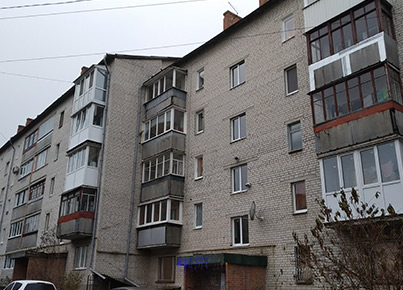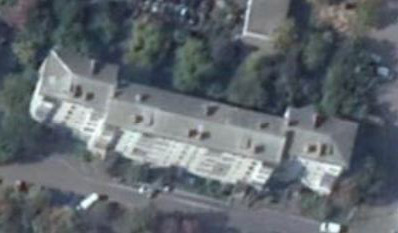The energy consumption of residential buildings in Ukraine is 32% [1] of the total final energy consumption and 11% of CO2 emissions [2], which makes them the largest energy consumer in the country.
Currently, about 66% of residential buildings in Ukraine are older than 50 years [3], and almost 80% of the residential building stock is inefficient [4] in terms of energy consumption.
The total area of residential buildings stock in Ukraine is about 968.4 million sq.m., 60% of these areas are located in urban settlements [5].
At the same time, less than 0.1% of the housing stock is modernized annually in the country [6].
Residential buildings have the highest potential for energy saving – 49.6% of the total energy saving potential in Ukraine.
According to different estimates, investment requirements for the complete thermal modernization of the housing stock in Ukraine amount to approx. EUR 45 billion.
The main problems in improving the energy efficiency of residential buildings in Ukraine are:
Sources:
[1] International Energy Agency, Energy balance of Ukraine, data as of the end of 2019;
[2] Ministry of Environment and Natural Resources of Ukraine, data on 2015;
[3] National Action Plan on Energy Efficiency, 2014;
[4] National Energy Efficiency Fund of Ukraine;
[5], [6].State Statistics Service of Ukraine, Residential Stock in Ukraine;


5 floors or less
Building construction period: 1978 - 1988
Heated area, m2: 4368
Heated space, m3: 12230
Number of floors: 5
Wall: Brick wall
U-value: 1,25
Roof or ceiling: Tilted roof with attic floor
U-value: 0,57
Ground: Basement
U-value: 0.7
Windows: Wooden (28%), PVC (72%
U-value: 2,78
Doors: Wooden (62%), PVC (38%)
U-value: 2,07
Heating system: District heating, 1-pipe system, unbalanced
Domestic hot water: Centralized DHW
Renovation Level 1 consists of measures, the implementation of which results in energy efficiency class of level "C"
Thermal insulation of walls (150 mm)
Replacement of old windows
Replacement of old doors
Thermal insulation of attic floors (200 mm)
Thermal insulation of ground floor (100 mm)
Individual heating substation
Hydraulic balancing (installation of balancing valves)
Thermal insulation of heat distribution pipes
Renovation Level 2 consists of measures, the implementation of which achieves in energy efficiency class of level "B"
Thermal insulation of walls (200 mm)
Replacement of old windows
Replacement of old doors
Thermal insulation of attic floors (250 mm)
Thermal insulation of ground floor (100 mm)
Individual heating substation
Hydraulic balancing (installation of balancing valves)
Thermal insulation of heat distribution pipes
Installation of a rooftop PV system